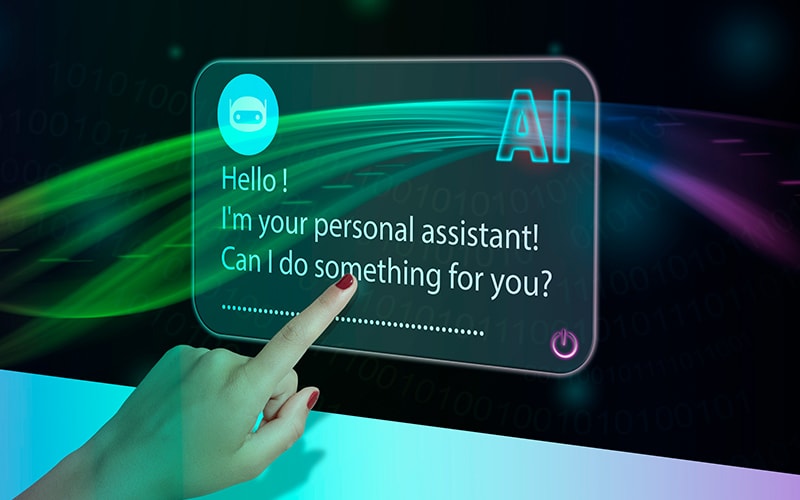
Prof. Mohanbir Sawhney, McCormick Foundation Professor, Kellogg School of Management, Northwestern University recently visited Infosys Bangalore. He shared deep and valuable insights for adopting enterprise AI and its diverse manifestations. He spoke about how organizations can realize value from the technology and eventually transform into agent-to-agent or an autonomous A2A ecosystem.
Enterprise AI is the integration of artificial intelligence and its manifestations in an organization’s day-to-day operations, across departments and functions. It is important for enterprises that invest in AI to realize the benefits of the technology. Satya Nadella recently spoke about AI not reaching what he called its ‘Excel moment’, when it is an industrial revolution, offering a significant jump in productivity for users. The recent Infosys AI Business Value Radar 2025 study reported 20% of AI deployments delivering on all their expectations.
According to Prof. Sawhney, organizations should make a distinction between the adoption of traditional AI/ML, and the more recent generative AI and agentic AI. Traditional AI/ML applications have been around for decades, are mature, and have proved their worth in specific use cases – fraud detection, anti-money laundering, credit scoring, in financial services for example. There is no human interaction. Domains like supply chain management, algorithmic trading, and IoT with machine-to-machine interactions with interoperability will be good examples for traditional AI/ML.
Generative AI excels when there is a human at the end of the AI value chain: customer care, HR interacting with employees, or sales. User interaction or UI is a unique aspect of generative AI. Departments like HR, training, marketing, sales, legal with intensive human interaction will see impactful implementations of generative AI – both for internal and for external or customer-facing workflows. The Infosys AI Business Value Radar reported marketing as the second most popular category of use cases for enterprise AI adoption, following IT.
Generative AI excels when there is a human at the end of the AI value chain. User interaction or UI is a unique aspect of generative AI.
An agentic AI framework: Agentic AI has more broader use cases and can talk to other agents, systems, humans, machines, and work autonomously. Agents are domain and industry specific. Industry-specific domain knowledge and legal and tax regulations will be important to implement agents and their workflows. Some industries instead of functions will be early adopters with a vertical focus: financial services, healthcare, retail, tax. Libraries of prompts and agents will be built. Industry-specific agentic frameworks and libraries will see more development and adoption.
Agentic AI is a logical evolution of generative AI. In marketing for example, AI can manage the marketing operations or specifically the lifecycle of a campaign as an example. Creative multimodal content will be generated using generative AI, tested and deployed with traditional AI, and a closed loop implemented to connect feedback, regenerate new content, and orchestrate the entire process with agentic AI. This will evolve into an autonomous marketing framework with human oversight.
A framework for autonomous agentic AI
Some risks such as hallucination with generative AI hold back companies. Agentic AI can address such risks with a human in the loop and explainability but have new challenges such as trust. Data in motion between agents should be secure. An agent receiving a data packet from another agent should ensure stewardship of the data.
The true promise of agentic AI will be unlocked when we have inter-enterprise agents talking to each other across organizational boundaries, eventually transforming into an agentic ecosystem. A buyer agent in a car making company needs to handshake with a seller agent in a steel maker, conduct a reverse auction, and negotiate a deal. For the two agents to talk to each other, they must know and follow each other’s governance frameworks. New levels of governance mechanisms and standards need to be put in place and this will take time.
The true promise of agentic AI will be unlocked when we have inter-enterprise agents talking to each other, eventually transforming into an agentic ecosystem.
Organizations must transform themselves before implementing enterprise AI. Infosys reported such use cases as most successful. However. Prof. Sawhney spoke about the current focus of agentic AI being at a task level. Among the 7Ps of marketing i.e. product, pricing, promotion, place, people, packaging, and process, the human element or people will see most impact positively. New roles such as an autonomous journey mapper and prompt designers will come up.
Enterprise AI is usually implemented as projects. Infosys reported product-centricity with a focus on delivering value to customers as having the most impact for companies. Prof. Sawhney’s point-of-view is that enterprise AI will start as projects and evolve into products, with companies developing their library of prompts and agents, with continuous improvement and increasing complexity for better business impact.






